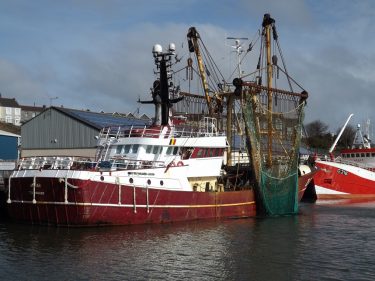
About a quarter of the world’s seafood caught in the ocean comes from bottom trawling, a method that involves dragging a net along the ocean’s shelves and slopes to scoop up shrimp, cod, rockfish, sole and other kinds of bottom-dwelling fishes and shellfish. The technique impacts these seafloor ecosystems, because other marine life and habitats can be killed or disturbed unintentionally as nets sweep across the seafloor.
Scientists agree that extensive bottom trawling can negatively affect marine ecosystems, but the central question — how much of the seafloor is trawled, or the so-called footprint of trawling — has been hard to nail down. A new analysis that uses high-resolution data for 24 ocean regions in Africa, Europe, North and South America, and Australasia shows that 14 percent of the overall seafloor shallower than 1,000 meters (3,280 feet) is trawled. Most trawl fishing happens in this depth range along continental shelves and slopes in the world’s oceans.
“Trawling has been a very controversial activity, and its footprint has not been quantified for so many regions at a sufficiently high resolution,” said lead author Ricardo Amoroso, who completed the research as a postdoctoral researcher in UW’s School of Aquatic and Fishery Sciences. “When you don’t quantify the impacts of trawling at a fine scale, you end up with an overestimation of the trawling footprint.”
Read more at UW Today »
